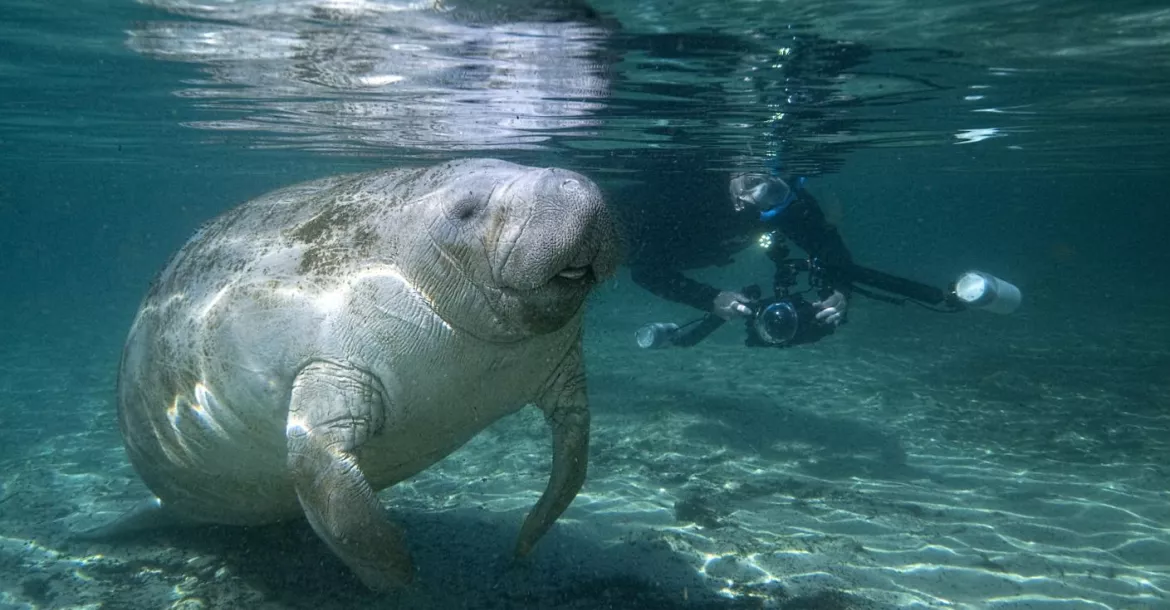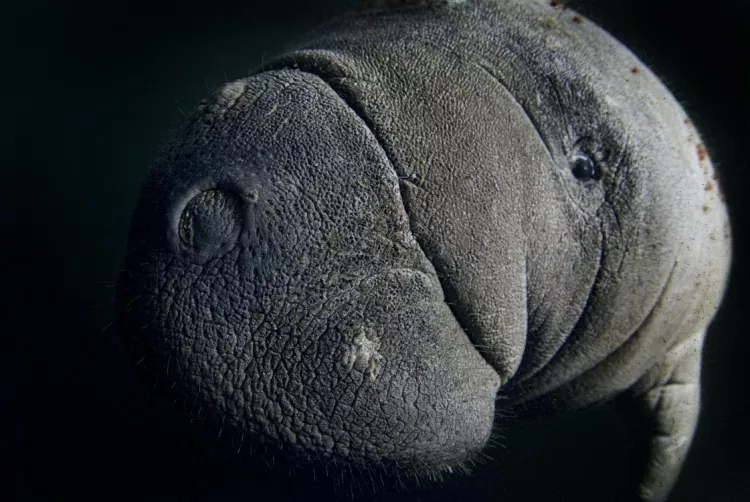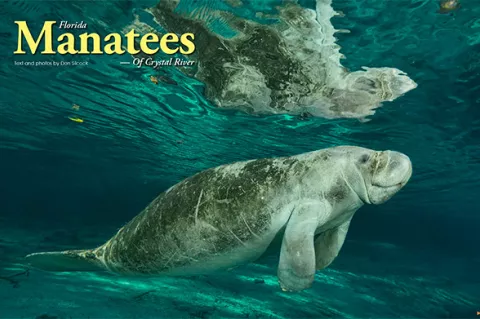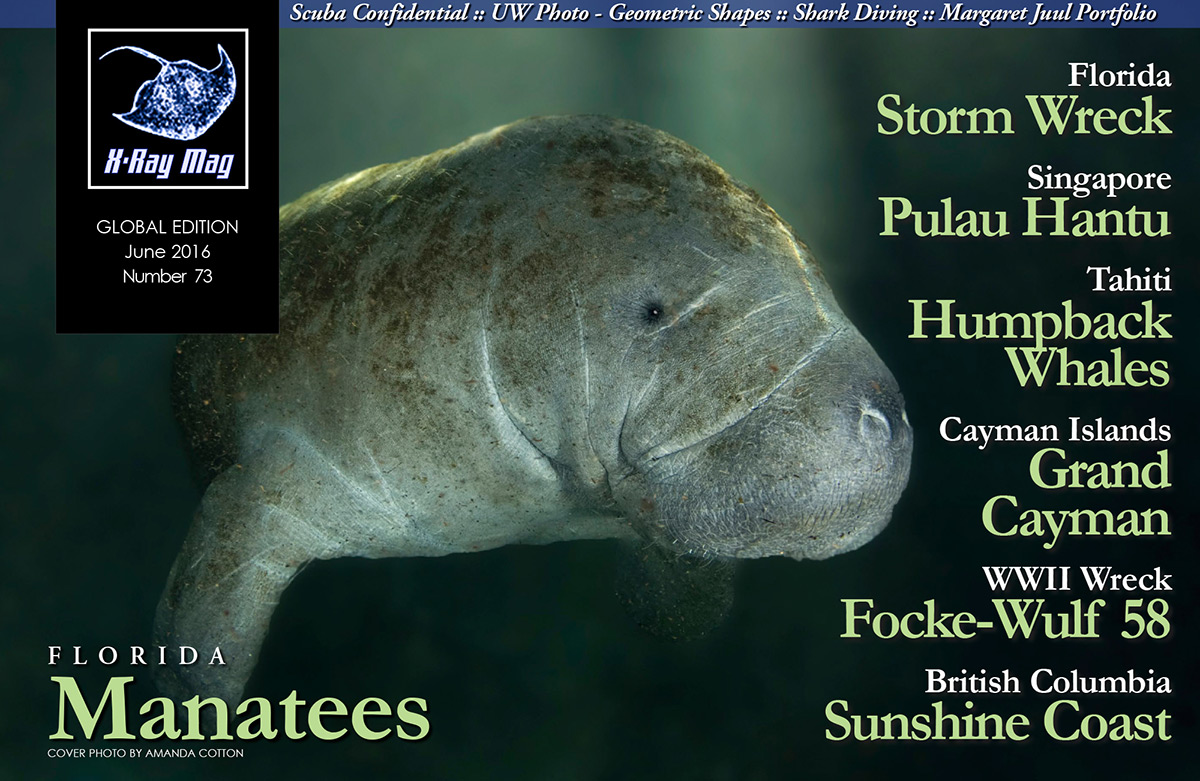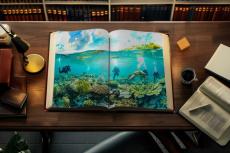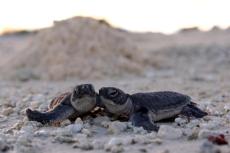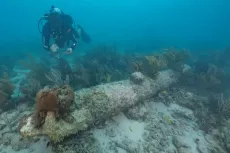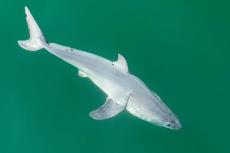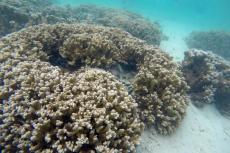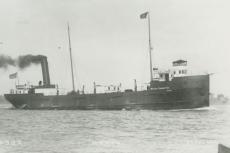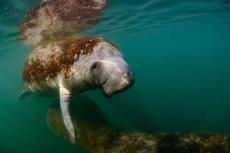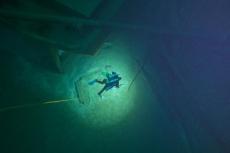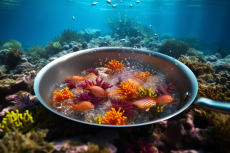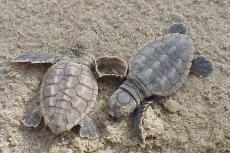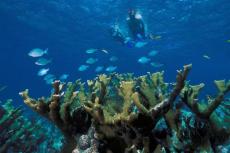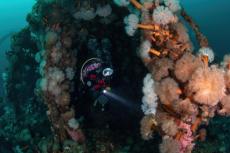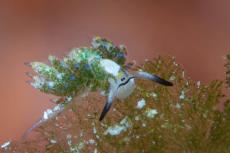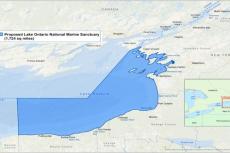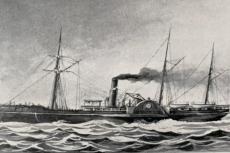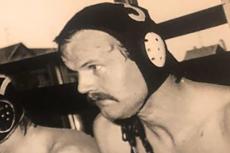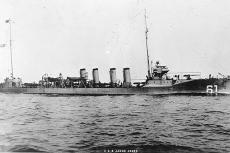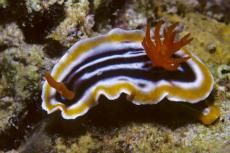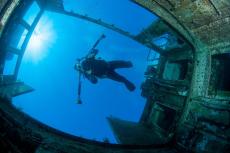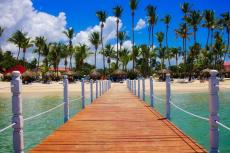
Florida Manatees: Sirenians of Crystal River
A winter’s dawn is a special time to be on Kings Bay, for as the first rays of the Florida sun appear over the horizon, they light up the soft mist on the warm waters of the bay and create an ethereal, almost mystical, feeling. Listen carefully and you will hear the gentle ripples from the swirl pools formed by the paddle-like tails of the sirenians, as they make their way towards the freshwater springs that are the source of Crystal River. Look closely into the dark waters ahead of those swirl pools and you will see the large and unmistakable sausage-like shape of the Florida manatee.
Contributed by
Factfile
Don Silcock is a Bali-based underwater photographer and writer whose principal focus is the diving and cultures of the Indo-Pacific region.
His images, articles and extensive location guides can be found online on his website www.indopacificimages.com.
The arrival of the manatees usually coincides with a rising tide and heralds their return from feeding on the sea grass of Kings Bay and Crystal River. Cold and tired, they need the warmth of the spring waters to restore their body temperature as they sleep in the natural and man-made refuges of the area. This area of the Florida peninsula in Citrus County, on the western side of the state that is bordered by the Gulf of Mexico, is without doubt the best place in the world to experience the unique and singularly exceptional Florida manatee.
Warm water
The peninsula that makes up most of the US state of Florida is formed by a large plateau of karst limestone that sits on a massive subterranean platform of bedrock which stretches far out into the Gulf of Mexico. Underneath all of Florida and the southern parts of Alabama, Georgia and South Carolina is one of the world’s most productive aquifers—the massive Floridan aquifer, which covers a total area of almost 100,000 square miles.
Instead of running off into river systems, the porous karst limestone allows the state’s regular and heavy rainfall to percolate down into the many underground chambers of the plateau and, as new water makes its way into the aquifer system, hydraulic pressure forces previous rainfall out into areas where those chambers are closest to the surface—such as Kings Bay in Citrus County. The water that emerges in those natural springs is extremely clear, having been thoroughly cleaned by the percolation process.
In an area covering about one square mile, Kings Bay has between 70 to 100 natural springs (depending on whose opinion you accept), 15 of which are significant “first magnitude” ones. Combined, they pump out some 300 million gallons a day, all at a constant temperature of 72°F (22°C), filling the bay with warm water and forming the head waters of Crystal River, which flows out into the Gulf of Mexico. This constant flow of warm water is the reason why the manatees come to Crystal River every winter.
The Florida manatee
Said to be the source of the mermaid myth, sirenians are large mammals with stout bodies, which look a bit like small whales. Their considerable size—a fully grown female manatee can reach four meters in length and weigh about 1,500kg—means they have evolved without any natural enemies and have developed a rather slow and passive nature.
They get their name from “sirens”, the term used to describe the sea nymphs whose captivating songs are said to have lured sailors to their deaths in treacherous shallow waters. Distantly related to elephants, but usually referred to as “sea cows”, there are now only four species of sirenians still alive of the 35 that are known to have once existed—three of which fall into the manatee family, while the fourth is in the dugong family.
The Florida manatee is a sub-species of the West Indian manatee species and is usually found in the shallow coastal waters around the state. In summer, it can be spotted as far west as Louisiana and all the way up to the Carolinas on the eastern coast of the United States. Solitary creatures that can live more than 70 years, manatees are the only aquatic mammals that are also herbivores. They exist on a primary diet of sea grass, the pursuit of which takes up to eight hours a day, with a fully grown adult consuming up to 10 percent of its body weight every day.
Contrary to what its rotund appearance might suggest, the manatee’s diet means that it is actually a really “lean machine”, with virtually no fat or blubber to keep it warm when the water temperature drops in winter. At water temperatures below 68°F (20°C), the Florida manatee simply cannot maintain its core body temperature and will die of cold stress unless it can find a source of warmth, which means that Kings Bay and its natural springs provide a perfect natural refuge for them.
Crystal River—Home of the manatee
There are actually two Crystal Rivers—the river itself, and the town of the same name, which sits on the shores of the 400-acre lake that is Kings Bay. First impressions are not always what they might appear, and such is the case with the Town of Crystal River where the sign outside of City Hall proudly informs you that you are now in the “home of the manatee”.
With a population of just over 3,000, Crystal River gives the first-time visitor a feeling of small-town America doing okay, thank you very much. There are numerous hotels and restaurants, plus a large shopping mall, and the area around Kings Bay hosts numerous very nice canal-side homes. This prosperity is derived from two very different sources: firstly, the estimated 150,000 people who come to experience the manatees every winter, injecting somewhere between US$20m and US$30m into the local economy; and secondly, the “snowbirds”—wealthy residents of the northeastern American states and Canada who migrate south in the winter months to escape their harsh weather for Florida’s much warmer southern version.
Peel away the Crystal River onion, however, and you will find a lot of lingering resentment amongst both local residents and snowbirds towards the manatees because of the boating speed and access restrictions in place under both State and Federal laws to protect them. Their basic argument is that manatees have been formally classified as “endangered” under Federal law since 1967, which was probably justified at the time, but the protection mechanisms have worked, so it is time to move the status to “threatened” and relax the restrictions, which impact heavily on the local boating community. Resident groups such as Save Crystal River point to the increasing numbers of manatees in Kings Bay—which are up from 1,267 when aerial surveys first began in 1991, to more than 6,300 in 2015—as the rationale for the change.
Manatee advocacy groups like the Save the Manatee Club have equally strong, but diametrically opposed views, arguing for stronger protection and making the main Three Sisters Spring a closed sanctuary. Their basic argument is that there is still a long way to go before any status change can be considered, pointing to the loss of 830 manatees in 2013 because of unusually cold winter weather and pollution-induced red tides.
Protecting the Florida manatee
The unique nature of the manatee has long been recognized in Florida, with the first state protections against killing or mistreating them enacted in 1893. Nationally, manatees were the first species to be listed as formally endangered under the Federal Endangered Species Preservation Act of 1966, with other State and Federal protection following—all tacitly recognizing the unique status of the Florida manatee.
Further legislation in 1978 recognized the entire state of Florida as a “refuge and sanctuary for the manatees” and established enforceable access restrictions and marine craft speed limits in 13 critical aggregation areas where manatees gather each winter. Manatees prefer shallow water, swim slowly, and because they are mammals, they must surface regularly to breathe—which puts them right in the danger zone where water craft are involved. For most of the year, that danger is relatively small, as they roam far and wide in search of the sea grass that sustains them—so the chances of being hit are minimal. But in winter, when they aggregate in places like Kings Bay, they are incredibly vulnerable.
Possibly the single biggest lifestyle attraction in Florida is the “life-aquatic” and boating in general is extremely popular in the state. The no-go access restrictions and speed limits in place in Kings Bay and Crystal River are like red rags to a bull to those who argue that the manatee conservation pendulum has swung too far. The conservationists counter that such restrictions are essential if the unique manatee is to prosper and survive.
A common statistic doing the rounds is that the most common cause of manatee fatality is water craft collision, with about 45 percent of those fatalities by propeller cuts and 50 percent because of “blunt trauma” from the boat hull. However, fatality statistics on the Florida Fish and Wildlife Commission’s website show that in 2013, “only” four of the 17 reported manatee fatalities in Citrus County were due to water craft. Obviously, the conservationists would argue that this shows the restrictions are working, while the resident groups and boaters would probably point to the statistical dis-information bandied around is typical of what happens when that pendulum goes too far!
In January this year, the US Fish and Wildlife Service acknowledged the increasing numbers of manatees and proposed down-listing their status from "endangered" to "threatened", but stated that all protection measures currently in place would remain. The conservationists responded strongly to this move by trying to marshal their supporters to use the 90-day public comment period on the proposed change to petition the Fish and Wildlife Service to get it reversed.
Swimming with the Florida manatee—Only in Crystal River
While the access restrictions and speed limits are the big issue in town, the “swim with” program is also a major source of contention between the manatee conservationists and tour company operators. Crystal River is the only location in the United States where tourists are allowed to enter the water and have a degree of interaction with the manatees.
An anachronism that dates to before the 1966 Endangered Species Act, swimming with the manatees was always a popular tourist draw in Crystal River and was “grandfathered” through the legislation—something that would never be permitted if it were proposed today. But back then, the numbers of tourists swimming with the manatees were a mere fraction of the estimated 150,000 who did it in 2015 and Crystal River was certainly not the hot location it is today.
Tourist numbers have more than doubled since 2007 when they hit an all-time record of 60,000, and they look set to climb further as travel magazines and television shows continue to publicize the chance to swim with manatees in Kings Bay. Add to that Crystal River’s appearance in the book, 1,000 Places to See Before You Die, and it is easy to see how tourist numbers could top 200,000 in the next few years!
For the 26 Crystal River companies offering manatee tours, not to mention the 110 licensed boat captains, the “swim with” program is a big attraction with huge emotional pulling power—something you will quickly come to appreciate when you arrive for your first dawn departure onto Kings Bay and find yourself surrounded by dozens of excited schoolkids and their mothers!
About 60 percent of all tourists who visit Crystal Bay are from Florida and swimming with a manatee is a very popular thing to do. The problem is that while many of those tourists leave Crystal River with a greatly heightened appreciation for the manatee, there are always those who get carried away by the excitement of the moment and do stupid things like trying to ride them. Local manatee activist Tracy Colson started documenting this on video and posting them on YouTube. She even caught local guides taking babies manatees from their mothers to pass around to tourists.
Stricter interaction guidelines have since been introduced, but I know from my personal experience in Kings Bay, a moment of sublime but cautious connectivity as a curious manatee approaches is instantly negated by the arrival of dozens of hyper schoolkids. Quite what impact this all has on the placid manatee can only be guessed at.
The Three Sisters
This set of three large springs is probably the most unique and inspiring place you could imagine to see and truly appreciate the Florida manatee. Set in 58 acres of pristine vegetation, which is now a wildlife refuge after having been acquired in 2010 by a consortium led by the Conservation Fund, the Three Sisters is one of Florida's last remaining urban springs.
Unlike the other main springs in Kings Bay, the setting of the Three Sisters means that the crystal clear waters that emerge from the underground aquifers do not merge with the darker waters of the bay until they exit the refuge. Which means that in the right conditions, the visibility is absolutely stunning, creating a magnificent backdrop to those manatees that enter the Three Sisters through the narrow channel that connects it with the nearby canal system and Kings Bay itself.
However, it is also open to the public, and what can seem like a unique and tranquil haven if you are there alone, quickly turns into thriving mass of assorted legs and torsos suspended from flotation sausages as the next party of tourists arrive. Very few tourists know how to snorkel and so they end up kicking madly to stay afloat, which rapidly stirs up the sandy bottom and sends the manatees to the deeper parts of the spring in search of some peace and quiet.
Interestingly, of the 400-plus manatees that have been identified (usually from their propeller scars) by the Florida Fish and Wildlife Commission as returning winter visitors, only around 100 of them will enter the Three Sisters. The rest stay in the sanctuaries where tourists are not allowed to enter. Whether it’s the more sociable manatees that go into the Three Sisters or those that prefer their warm water from as close to the source as possible is not known.
The tidal nature of Kings Bay means that the water level in the Three Sisters also varies with the tides—something that the manatees can sense through their vibrissae, the incredibly sensitive facial and body hair believed to give them a kind of three-dimensional spatial and navigational awareness.
One of the most interesting experiences I had during the 10 days I spent in Crystal River was early one morning at the entrance of the narrow channel that provides access into the Three Sisters Spring. Entrance to the Three Sisters is not allowed before 7:00 a.m., which that morning coincided with more or less the low tide. As I entered the water and made my way towards the channel, I realized that I was surrounded by several large manatees that were all waiting patiently for the water level to rise.
It was really quite something to be surrounded by three- to four-meter-long animals who seemed either oblivious (hard to believe, given their vibrissae) or accommodating of my presence. Then I realized that in all probability the manatees were simply cold and were enjoying the warmth of the water coming out of the Three Sisters.
Quite how long the Three Sisters will remain open to the public is far from clear as there is a strong belief amongst the conservationists that allowing large number of tourists in greatly stresses those manatees that use it. Conservationists argue that it should be made a true sanctuary with observation only allowed from a boardwalk around the springs.
The manatee—A personal observation
For me, an opportunity to interact and photograph large marine creatures is as good as it gets—they grace you with their presence, are in charge of the agenda and I find the actual experience utterly inspiring! Meeting the Sirenians of the Crystal River was just something I had to do, even though it involved traveling two-thirds around the world from Bali, complete with all my dive and camera gear.
I am so glad I did, but I have to say that I left Crystal River with a degree of ambivalence. On the one hand, I loved the manatees—I mean, how could you not? They are big, cute and wonderfully photogenic; plus, if you can get time alone with one in the Three Sisters, the backdrop is just spectacular. But, I was just not comfortable with the way Crystal River has so commercialized them, and if they really are one of the thousand things to see before you die, then it can only get worse.
My overall sense of things was that everything that could be done was being done to minimize stress on the manatees—the Fish and Wildlife Service seems to have good systems in place to monitor the overall situation. The tour operators seem to really know what they are doing and follow the rules (well, certainly mine, Birds Underwater, did) plus the extensive number of Manatee Watch volunteer wardens do a great job.
I felt incredibly fortunate to have had some close personal contact with a few of those manatees that use the Three Sisters. This was always on their terms though, where they came to me and allowed me to photograph them.
The rules of engagement from the Fish and Wildlife Services for “professional photographers” is that after you have watched an instructional video on how to behave and paid a fee, you are given a bright vest with a number on it and are allowed to submerge rather than stay on the surface like all the other tourists. You are not allowed to pursue the manatees under any circumstances, so you have to hold your breath and hope they come to you.
But when that happens it really is a special moment that can only really last until your desire to breathe overcomes your desire to cherish it. What troubled me about Crystal River was the difference between those incredible moments of intimate interaction and what happens when hordes of tourists arrive eager to spend an hour or so in the water and then go home and tell friends, “I touched a manatee.” ■
Published in
-
X-Ray Mag #73
- Læs mere om X-Ray Mag #73
- Log ind for at skrive kommentarer
